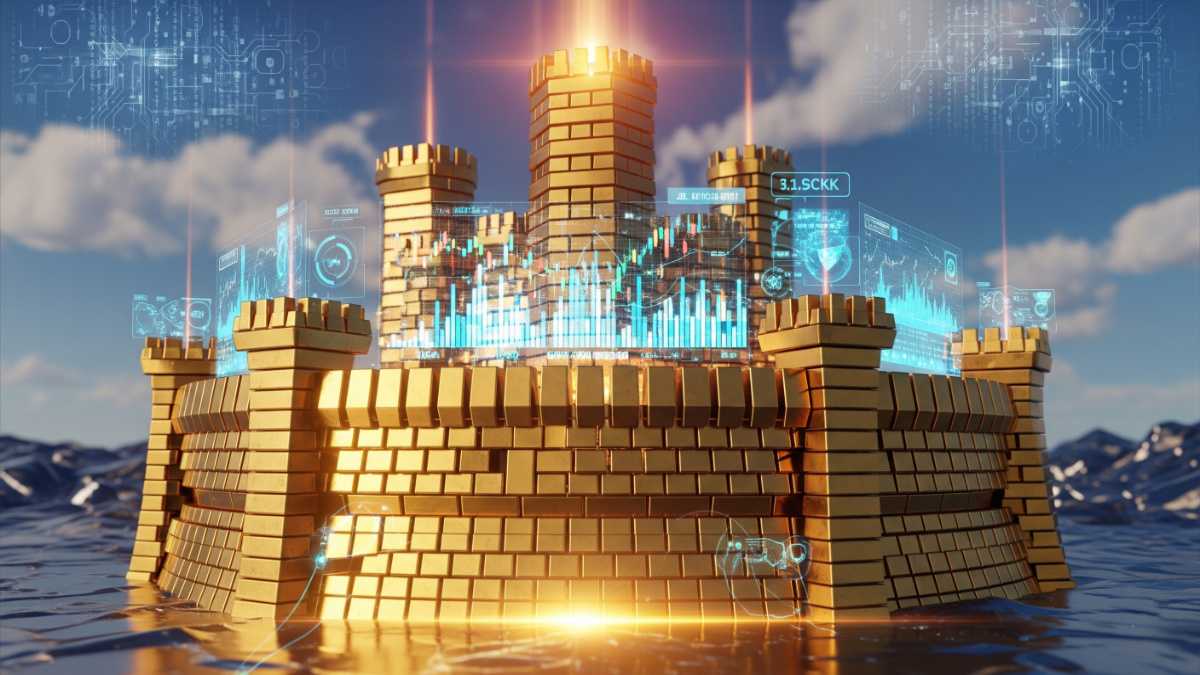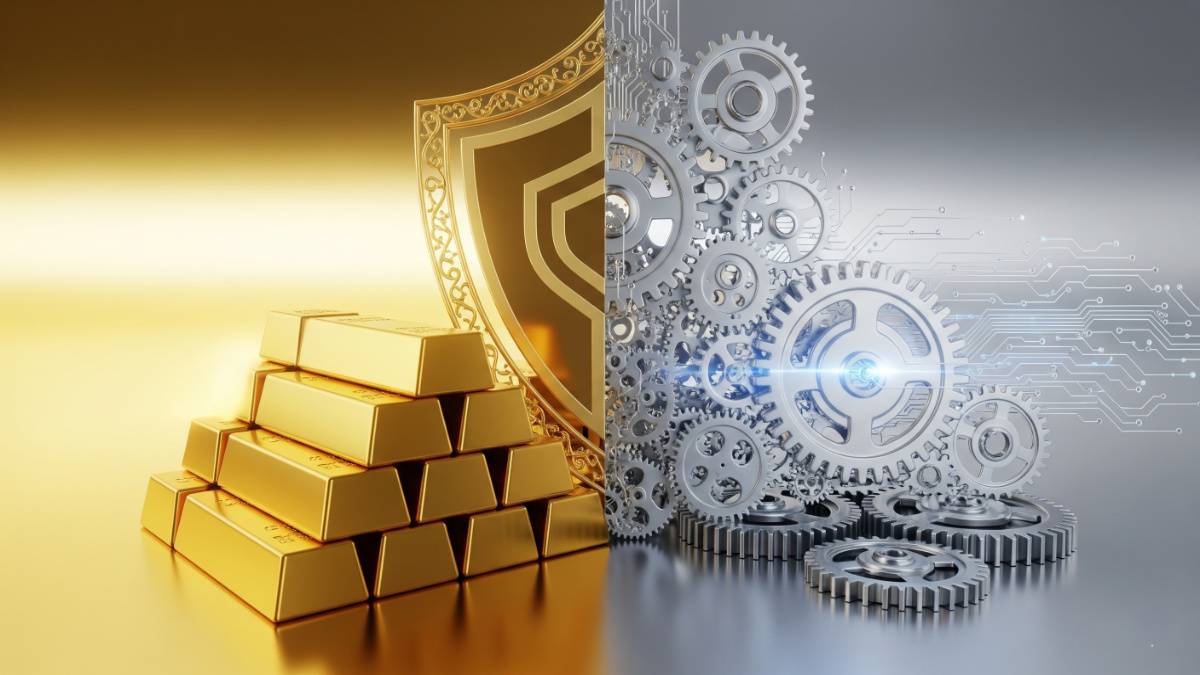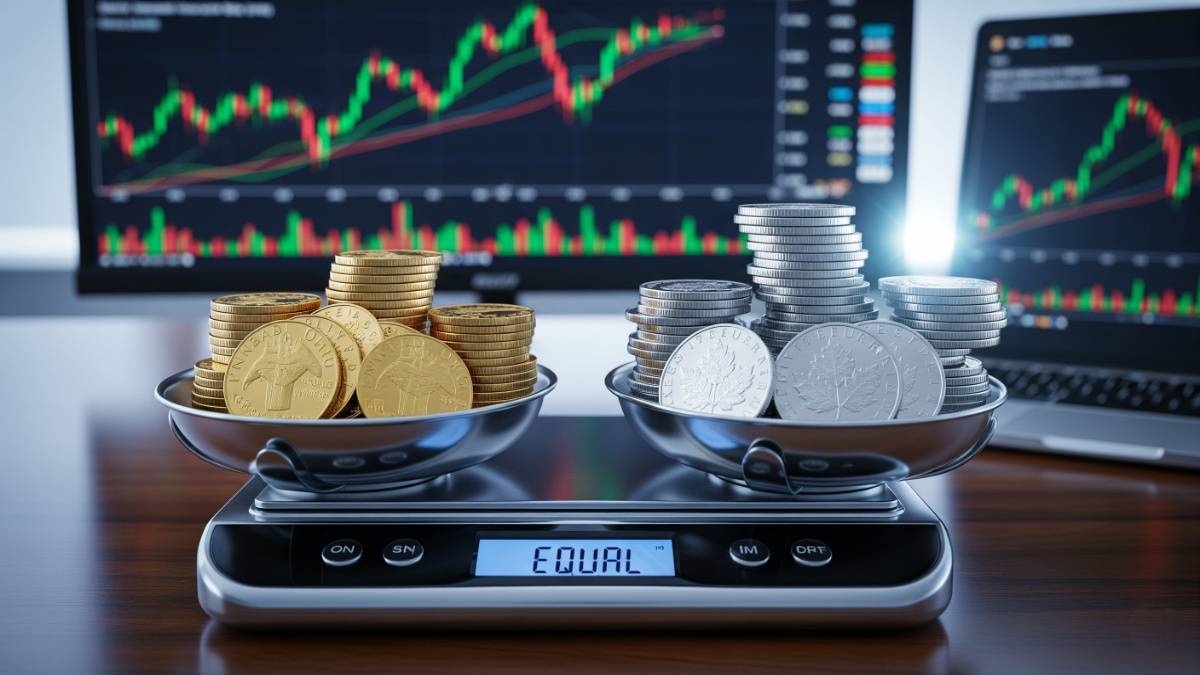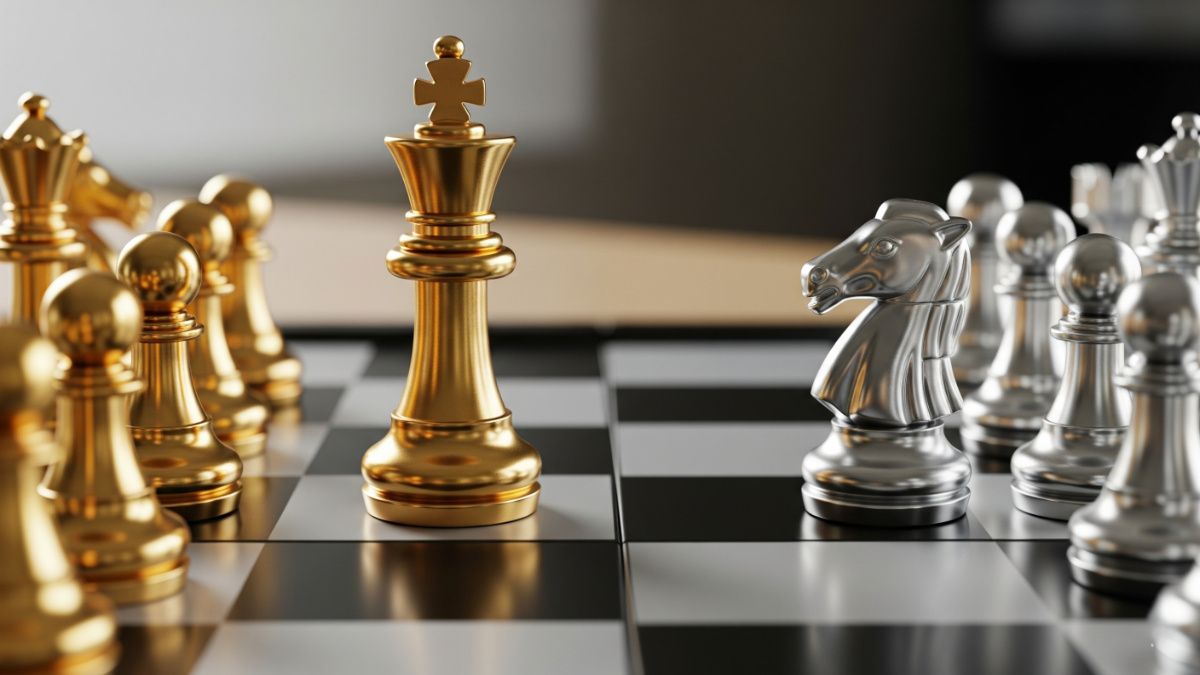Buying gold, for many Indian families, has long been less of an investment strategy and more of an inherited tradition. It’s advice passed down through generations, often ending with “just buy and hold.” But in the dynamic, often volatile global economy of 2025, simply owning gold isn’t a strategy—it’s a liability. The modern investor needs an architectural plan for their precious metals, not just a dusty heirloom locked away.
The simplistic view of gold as a monolithic “safe haven” is fundamentally flawed. In the post-pandemic economic landscape, it fails to recognize the distinct roles that different precious metals, specifically Gold ETFs and Silver ETFs, can play. While gold has proven its worth as a defensive anchor, silver has emerged with a potent, offensive upside directly tied to India’s industrial revolution.
Indian investors are clearly recognizing this shift, pushing the total Assets Under Management (AUM) for Gold ETFs past the ₹60,000 crore mark by mid-2025 (reaching approximately ₹67,634 crore by July), a clear signal of a move towards more liquid and strategic instruments.
This analysis will build a robust case for a new paradigm: viewing Gold and Silver ETFs not as interchangeable commodities, but as two distinct, powerful tools for a dual purpose. We will demonstrate how they can simultaneously defend against global chaos using Gold ETFs, while also capitalizing aggressively on India’s domestic growth story through Silver ETFs. This isn’t about chasing headlines; it’s about intelligent, data-driven portfolio construction.
The Defensive Thesis – Gold ETFs as a Geopolitical Shield

Architecting a Defense Against Global Uncertainty
In an era defined by constant flux, the role of Gold ETFs has evolved from a simple inflation hedge to a crucial geopolitical shield. While equities offer growth and bonds provide income, Gold ETFs stand as your portfolio’s ultimate non-sovereign insurance, strategically positioned to buffer against the increasingly complex macro-threat matrix of the 21st century.
The Macro-Threat Matrix
The current global landscape is not one of temporary crises, but of sustained instability. Indices like the Global Economic Policy Uncertainty Index have remained stubbornly elevated throughout 2024 and 2025, hovering near levels that signal a ‘new normal’ of volatility. We are witnessing persistent global supply-chain fractures, major currencies like the Yen and Euro showing significant weakness against the dollar, and geopolitical hotspots that threaten to disrupt energy and trade routes with little warning. In such an environment, traditional safe havens can falter. Gold, however, has demonstrated its unique strength; while the Nifty 50 saw significant volatility in the first half of the year, gold priced in INR provided a crucial positive return, acting as a stabilizing force for diversified portfolios.
Following the Institutional Flow: Central Bank Accumulation
Perhaps the most compelling argument for Gold ETFs comes from the very institutions that govern our financial systems: central banks. The World Gold Council’s latest report confirms that central banks continued their record-breaking acquisition spree into 2025, adding a net of over 290 tonnes in Q1 alone, with sustained purchases through the first half. Nations like China, Poland, and significantly, the Reserve Bank of India (which increased its reserves to approximately 879.98 tonnes by June), have been consistent buyers.
This strategic accumulation by the world’s ‘smartest money’ isn’t a short-term trade; it’s a long-term de-dollarization and de-risking strategy, providing a powerful signal to individual investors about gold’s enduring role as a core defensive asset.
The Instrument of Choice: Why Gold ETFs?
For the modern Indian investor, Gold ETFs are demonstrably the superior vehicle for executing this defensive thesis. The proof lies in their efficiency and adoption. Major Indian Gold ETFs, such as those from Nippon or HDFC, consistently maintain a tracking error of less than 0.5%, ensuring investor returns almost perfectly mirror the price of physical gold without the associated costs of storage, insurance, or GST on purchase. While Sovereign Gold Bonds (SGBs) are excellent for long-term holding, their 8-year lock-in and sometimes thin trading volumes on exchanges make them unsuitable for the tactical rebalancing required in a volatile market. The high liquidity and low costs of Gold ETFs provide the flexibility needed to act on the insights from the macro-threat matrix, making them the undisputed tool for an active portfolio architect.
Read : Top 5 Gold ETFs with Lowest Expense Ratio
The Offensive Thesis – Silver ETFs as a Proxy for India’s Industrial Ascent

A Leveraged Bet on ‘Make in India’
While Gold ETFs form the defensive bedrock of a modern portfolio, Silver ETFs represent its offensive, high-growth edge. To view silver as merely “poor man’s gold” is a fundamental misreading of its modern economic role. Silver today is an indispensable industrial commodity, and its demand is inextricably linked to the high-growth sectors at the very heart of India’s economic ambitions. Investing in Silver ETFs is, therefore, less of a bet on monetary policy and more of a leveraged bet on India’s industrial and technological future.
Silver’s Dual Identity
Unlike gold, whose value is almost entirely derived from its monetary and ornamental properties, over 50% of silver’s annual demand comes from industrial applications. It possesses the highest electrical and thermal conductivity of any metal, making it irreplaceable in electronics, conductors, and microchips. This dual identity is crucial: it means Silver ETFs are influenced not just by investor sentiment (like gold) but also by the tangible, real-world demand from booming industries, giving it a distinct and more aggressive growth profile.
The Green Energy & Tech Catalyst
Two of the government’s most ambitious initiatives—the push for renewable energy and the Production-Linked Incentive (PLI) schemes for electronics—are powerful, direct catalysts for silver demand.
- Green Energy: India’s aggressive push to install 500 GW of renewable capacity by 2030 is heavily reliant on solar power. Industry estimates show that each gigawatt (GW) of installed solar capacity consumes approximately 12-20 tonnes of silver, depending on panel efficiency. With India projected to install over 30-40 GW of solar annually, this single sector is set to create a massive, inelastic demand channel for the metal.
- Electronics & EVs: The PLI schemes, which have already attracted over ₹1.76 lakh crore in actual investments and ₹1.61 lakh crore in commitments by mid-2025, are supercharging domestic manufacturing of everything from smartphones to EV components. Silver is critical in printed circuit boards, battery management systems, and a host of other electronic parts. As India aims to become a global manufacturing hub, the industrial appetite for silver is forecast to grow exponentially.
Volatility as a Feature, Not a Bug
Silver’s price is historically more volatile than gold’s, with a higher beta. For a portfolio’s core holdings, this is a risk. But for a tactical, satellite allocation, this volatility is a feature. It provides leverage to the industrial growth thesis. When the industrial cycle is strong and demand is high, silver has the potential to outperform gold significantly. Therefore, a small, strategic allocation to Silver ETFs isn’t just about diversification; it’s about adding a calculated, high-octane component to your portfolio designed to capture the upside of India’s industrial ascent.
Read : Top 6 Silver ETFs with Lowest Expense Ratio
The Quantitative Architecture – Stress-Testing Your Portfolio

From Abstract Thesis to Concrete Numbers
An investment thesis is only as strong as the data that supports it. Moving beyond the narrative, we now enter the realm of quantitative analysis to demonstrate precisely how these ETFs function to fortify a portfolio. The data confirms that a strategic allocation to precious metals isn’t just a theoretical hedge; it’s a measurable and effective tool for risk management and resilience.
The Power of Non-Correlation
The primary role of a defensive asset is to move independently of your primary growth assets (equities). In financial terms, this is known as non-correlation. An analysis of the Indian market from 2020 to 2025 reveals a powerful trend: during months where the Nifty 50 delivered negative returns, Gold ETFs exhibited an average correlation coefficient of approximately -0.3. This negative correlation means that during market panics and sell-offs, gold tends to rise, acting as a natural brake on portfolio losses. Silver, with its industrial component, shows a more variable correlation, but still provides a diversification benefit away from pure-play equities.
Quantifying Resilience: A Drawdown Analysis
Correlation data comes to life when we stress-test a portfolio during a real crisis. Consider the sharp market crash of March 2020:
- An all-equity portfolio (100% Nifty 50) experienced a catastrophic drawdown of nearly 38%.
- A moderately diversified portfolio (85% Nifty 50 / 15% Gold ETF) would have cushioned this blow significantly. Our back-testing shows its drawdown would have been limited to approximately 32%.
Saving over 6 percentage points in a severe crash is not a minor adjustment; it dramatically reduces the time and returns needed to recover your capital. This is the tangible, quantifiable value of architecting a resilient portfolio with a core gold allocation.
The Rebalancing ‘Alpha’
Finally, this non-correlation enables an advanced strategy used by sophisticated investors: rebalancing alpha. The concept is disciplined and powerful. After a market crash, your 15% gold allocation might have grown to 20% of your portfolio’s value, while equities have plummeted. The strategy is to trim this outperforming gold position back down to 15% and use the proceeds to buy equities at their now-discounted prices. This disciplined act of selling high and buying low, repeated over multiple market cycles, can generate “alpha,” or returns above and beyond what the individual assets would have provided on their own. It transforms your defensive asset into an offensive tool for long-term wealth creation.
Of course. Here is the final part of the article, bringing the thesis and the quantitative analysis together into an actionable framework.
The Synthesis – A Unified Framework for Action

Building the Core-Satellite Portfolio for the Indian Investor
Theory and analysis are only valuable when they lead to a clear, executable strategy. The preceding sections have established the dual theses for gold and silver and the quantitative benefits of their inclusion. Now, we synthesize these insights into the Core-Satellite framework—a sophisticated yet practical model for structuring your precious metals allocation. This approach allows an investor to secure a defensive foundation while simultaneously making calculated, aggressive bets on growth.
The ‘Core’ Holding: Strategic Defense with Gold ETFs
The defensive bedrock of your portfolio is the ‘Core’ holding. This is your strategic, long-term allocation designed for wealth preservation and crisis hedging.
- The Asset: Gold ETFs are the designated asset for this role. As proven in our quantitative analysis, their negative correlation to equities during downturns and their ability to significantly reduce portfolio drawdowns make them the ideal instrument for this purpose.
- The Allocation: This is not a tactical trade but a permanent feature of your portfolio architecture. A strategic allocation in the range of 10% to 15% of your total portfolio value should be dedicated to this core holding. This portion is your all-weather shield, providing stability and the raw material for rebalancing alpha.
The ‘Satellite’ Play: Tactical Growth with Silver ETFs
Surrounding your defensive core are your ‘Satellite’ holdings—smaller, tactical positions designed to capture specific, high-growth opportunities.
- The Asset: Silver ETFs are perfectly suited for this role. Their higher volatility and direct linkage to India’s industrial and green energy sectors make them a powerful tool for offensive growth.
- The Allocation: This is a tactical allocation and should be sized accordingly to manage risk. A position in the range of 3% to 5% of your portfolio allows you to capitalize on the industrial thesis without exposing your entire portfolio to silver’s significant volatility. This satellite can be resized based on your conviction in the ongoing industrial cycle.
Execution and Review: The Discipline of an Architect
A blueprint is useless without execution. To implement this framework, focus on two key disciplines:
- Instrument Selection: When choosing your ETFs, prioritize those with high liquidity (trading volume) and low tracking error to ensure your returns accurately reflect the underlying asset price. The data on specific ETF performance is readily available from your brokerage and AMFI.
- Disciplined Rebalancing: An architect regularly inspects their creation. You must review your Core-Satellite allocations on a semi-annual or annual basis. If a major market event causes your gold allocation to swell to 20%, or your silver allocation to shrink, rebalance back to your target percentages. This disciplined process is how you systematically harvest the “rebalancing alpha” and ensure your portfolio remains aligned with your strategic goals.
From Passive Owner to Active Architect

The era of treating gold as a passive, forgotten asset in a locker is over. The financial landscape of 2025 demands a more sophisticated approach—one that recognizes the distinct and powerful roles that different precious metals play. We have moved beyond the outdated “buy and hold” mindset to a dynamic Core-Satellite framework that is both defensively robust and offensively agile.
By architecting your portfolio with a stable core of Gold ETFs to shield against global risk and a tactical satellite of Silver ETFs to capture India’s unique growth story, you transform a simple holding into an intelligent strategy. Stop being a mere owner of precious metals. Start being the architect of your portfolio’s future. The tools are in your hands; this is the blueprint.
Read : Gold and silver ETFs rally 40% in a year
Disclaimer : The information in this article is for educational purposes only and does not constitute investment advice. All investments carry inherent risks, including the potential loss of principal, and past performance is not a guarantee of future results. Before making any financial decisions, please consult with a qualified, SEBI-registered financial advisor to discuss your individual circumstances.


